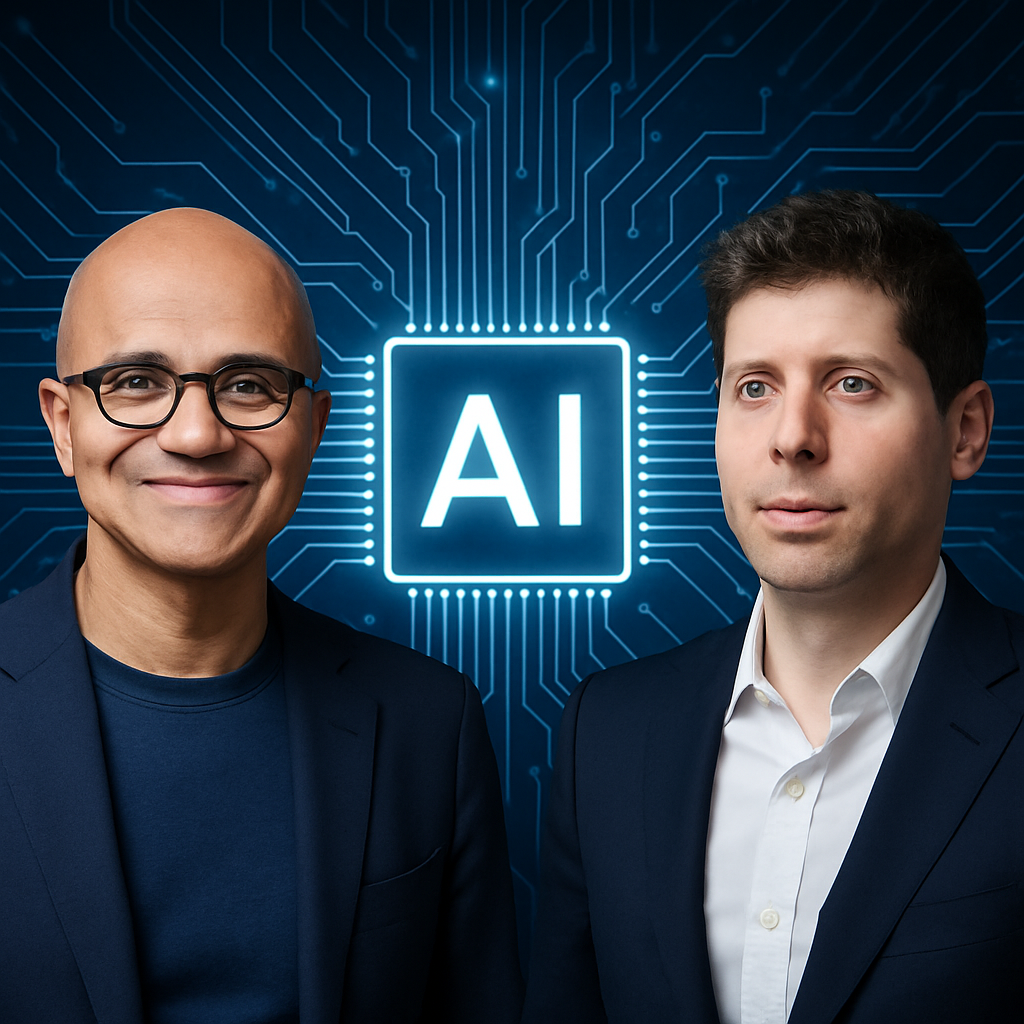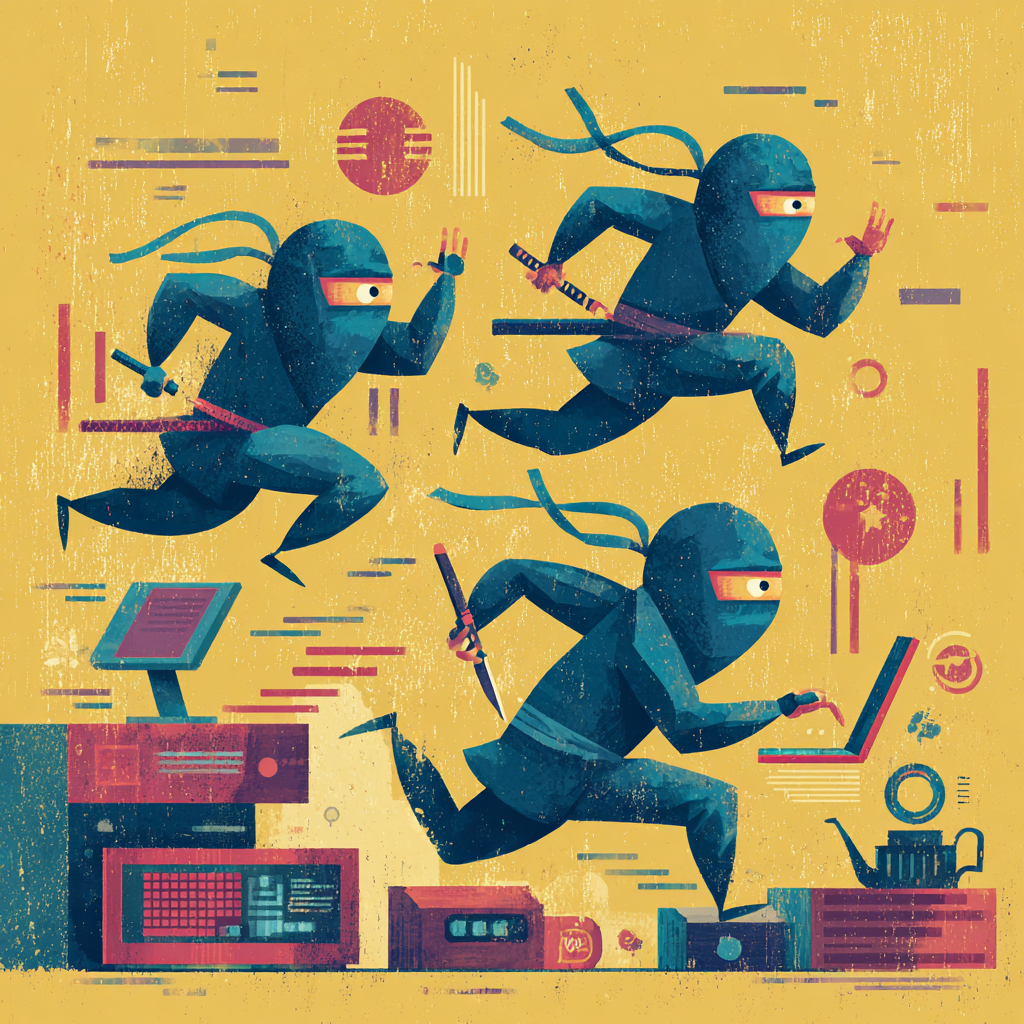Microsoft, OpenAI, and the Future of the World’s Biggest Company

Artificial intelligence is no longer just a buzzword. It’s infrastructure. And at the center of this seismic shift sit two players: Microsoft and OpenAI. With Microsoft owning a 49% stake in OpenAI’s for-profit subsidiary — and integrating GPT technology into everything from Word and Excel to GitHub and Bing — the question isn’t whether they’ll shape the next decade of business, but whether this duo could become the biggest company in the world.
Microsoft’s Strategic Stake
Microsoft doesn’t technically “own” OpenAI in the traditional sense. Instead, it holds a profit-sharing agreement through OpenAI’s capped-profit subsidiary. This gives Microsoft a near-50% claim on OpenAI’s financial upside while also making Azure the exclusive cloud backbone for OpenAI’s models.
It’s a masterstroke. Microsoft doesn’t just invest in the gold mine — it sells the shovels too.
Why OpenAI Could Become the World’s Biggest Company
1. Default Intelligence Layer
ChatGPT isn’t just a chatbot. It’s quickly becoming the operating system for thought work. If every app, workflow, and business process integrates GPT-powered reasoning, OpenAI sits at the core of the digital economy.
2. Network Effects in Knowledge
Every interaction improves model fine-tuning. With millions of users daily, OpenAI is building a compounding moat of data + feedback.
3. Shift in Discovery & Search
If Google’s “10 blue links” defined the last 20 years, AI Overviews and generative answers will define the next 20. Being the engine that people query instead of search could mean trillion-dollar scale.
Why Microsoft May Outgrow Even OpenAI
OpenAI’s unique nonprofit-capped-profit structure means it isn’t designed to maximize shareholder value. Microsoft, however, is. By embedding GPT into:
• Office (Word, Excel, Outlook)
• GitHub Copilot
• Bing & Edge
• Azure cloud services
…it ensures that no matter who uses OpenAI, Microsoft profits. This positioning means Microsoft could outgrow Apple and Google, not by making new hardware, but by powering the intelligence behind everything.
The Thought Experiment: 2030
By 2030, imagine this:
• Microsoft Office isn’t just software — it’s your co-worker.
• Azure isn’t just cloud — it’s the nervous system of AI worldwide.
• OpenAI isn’t just a research lab — it’s the standard API of intelligence.
If AI is the new electricity, OpenAI is Edison. Microsoft is General Electric. And GE, not Edison, became the giant.
Conclusion
Will OpenAI itself become the biggest company in the world? Probably not — its structure prevents it. But Microsoft’s partnership ensures it will reap the benefits of OpenAI’s breakthroughs. The smarter bet is this: Microsoft will become the biggest company in the world, powered by OpenAI.
At NinjaAI, we help Florida businesses navigate these shifts — optimizing for AI search, GEO, and AEO — so that local businesses don’t get drowned out by the giants.
More:
Artificial intelligence as infrastructure also changes the rules of competition. In the industrial era, companies competed over factories, railroads, and oil pipelines. In the digital era, they competed over search, operating systems, and smartphones. But in the age of AI, the competitive edge lies in who controls the reasoning layer itself—the software that interprets intent, generates output, and automates workflows. Microsoft and OpenAI aren’t just making tools; they are hardwiring themselves into the backbone of productivity, creativity, and decision-making. That’s a much stickier position than owning a phone OS or an app marketplace. Once AI becomes the default “assistant” inside every click and keystroke, removing it becomes as unthinkable as ripping electricity out of a modern office building.
Another dynamic at play is the sheer scale of distribution Microsoft already commands. When Apple launches a new product, it must convince millions of consumers to buy new devices. When Google rolls out a new service, it often lives or dies based on ad revenue. But Microsoft already has Word, Excel, Outlook, and Teams embedded in the daily lives of over a billion users. Add GPT-powered intelligence into those apps, and adoption is practically guaranteed. In many organizations, it won’t be a choice—it’ll simply arrive in the next software update. That distribution advantage could give Microsoft a stranglehold on how AI is introduced to the enterprise world, leapfrogging slower rivals.
It’s also worth considering the psychological moat Microsoft gains by being the “safe” partner for AI adoption. OpenAI may be seen as the daring innovator, but Microsoft is the trusted enterprise vendor—the company that Fortune 500s have relied on for decades. In a moment when businesses, governments, and regulators are all grappling with AI’s risks, Microsoft positions itself as the responsible adult in the room. That trust factor matters. Corporations may experiment with startups, but when it comes to embedding AI into mission-critical workflows, they’ll gravitate to Microsoft’s ecosystem, not least because procurement officers sleep better at night when they see a familiar name on the contract.
Finally, the compounding effect of Microsoft’s ecosystem can’t be overstated. By aligning OpenAI’s models with Azure’s cloud dominance, GitHub’s developer community, LinkedIn’s professional network, and the Office productivity suite, Microsoft has constructed a flywheel that reinforces itself. Developers build apps on GPT through Azure. Knowledge workers use GPT inside Office. Recruiters use AI-driven tools on LinkedIn. And every cycle of use generates more data, more feedback, and more reasons for businesses to stay locked into the Microsoft + OpenAI orbit. This isn’t just a partnership—it’s the architecture of a potential super-company, one that grows stronger with every document typed, every line of code written, and every query answered.















